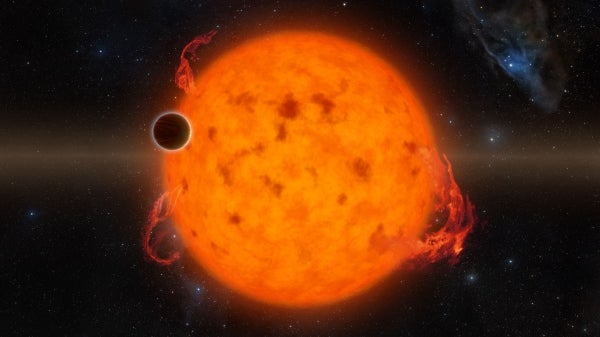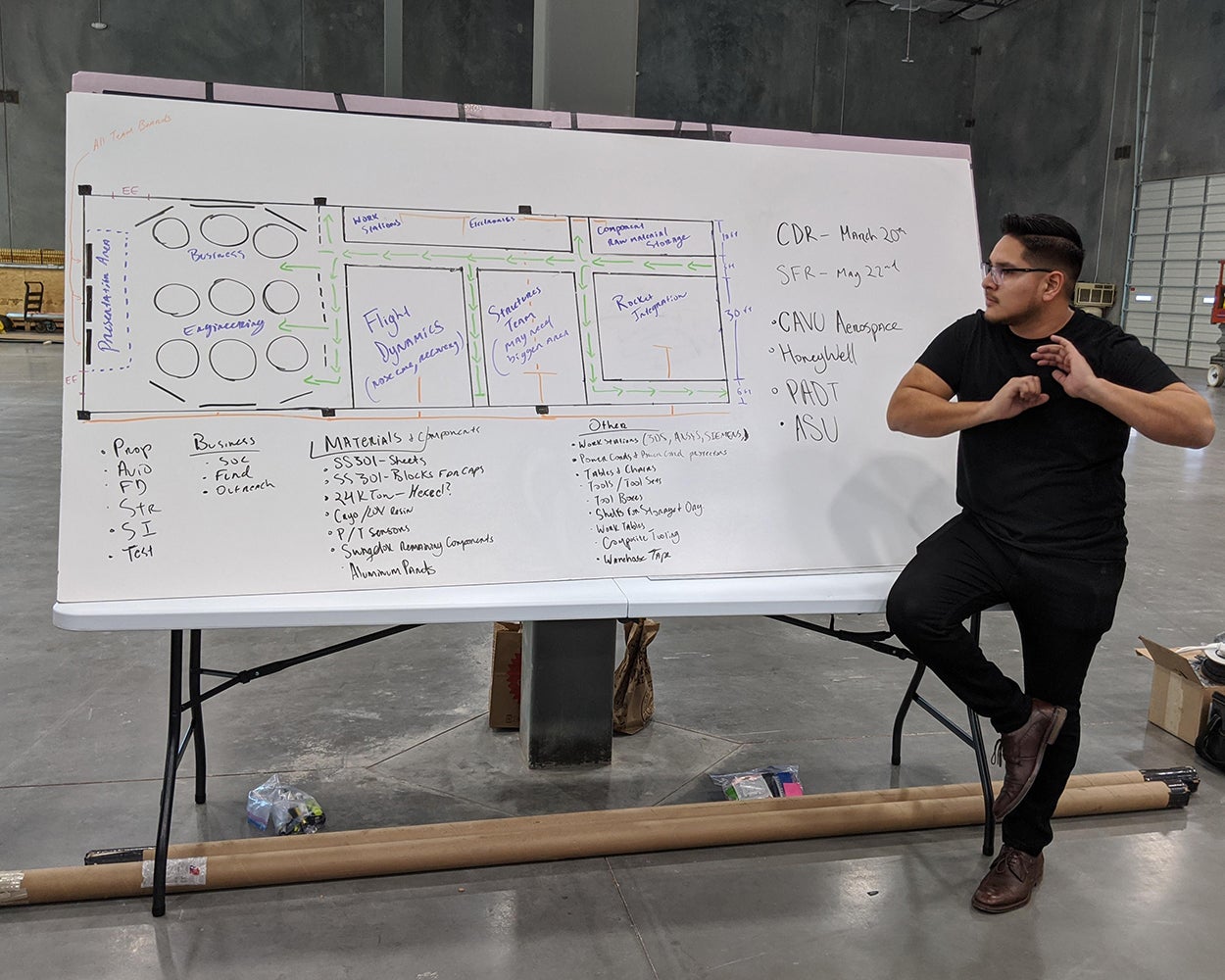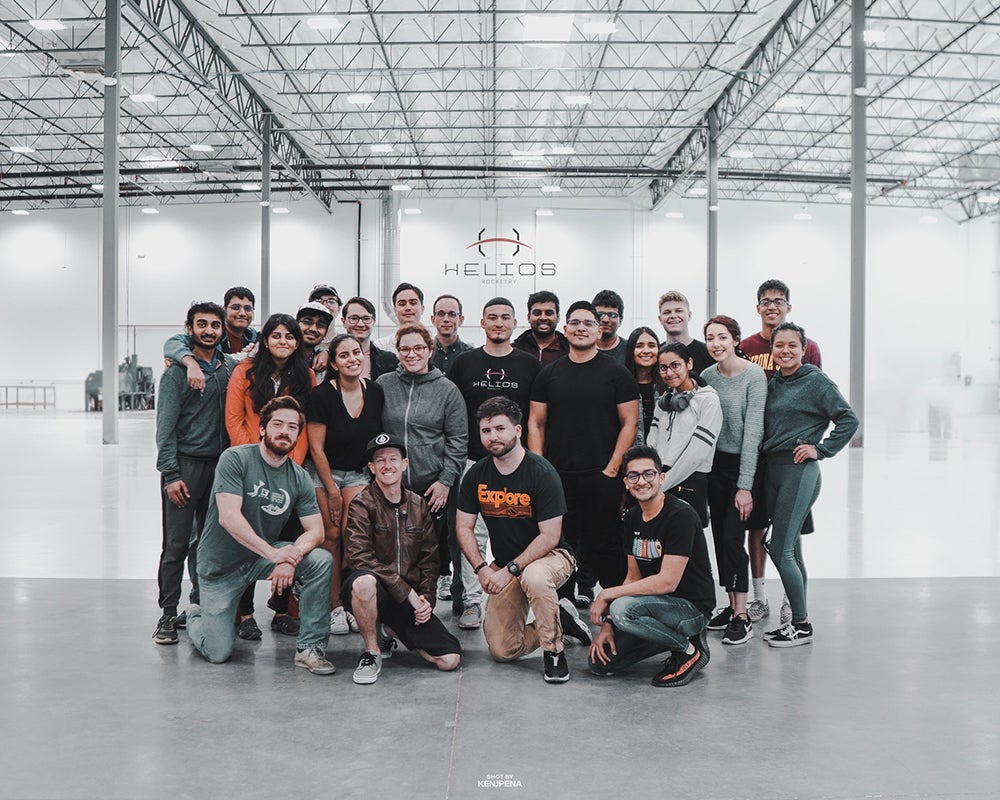What do you need to build a liquid-fueled rocket that can reach the edge of space?
First, a place big enough in which to build it.
For Arizona State University’s Helios Rocketry, a team of about 50 students competing in the Base 11 Space Challenge, use of 9,000 square feet donated by CAVU Aerospace near Phoenix-Mesa Gateway Airport just made the race to the stars a lot more attainable. The space is a portion of the new 80,000-square-foot CAVU Component Repair facility.
“It’s exciting to watch this all come to life; we are so impressed with the drive and vision these young adults show,” said CAVU partner Kenneth Kocialski. “The CAVU team is happy to be a small part of this!”
ASU alumnus Benjamin Hernandez, a founding member of the Arizona Spaceport Alliance and an aerospace representative with Scottsdale-based commercial real estate brokerage firm Keyser, connected with Aric Bopp, executive director of economic development at ASU Knowledge Enterprise.
Hernandez and Bopp reached out to Kocialski and, almost immediately, the team had its manufacturing site.
Elvis Leon, Helios Rocketry president, shows the team the rocket manufacturing layout within the CAVU Aerospace Facility. Photo by Theresa Grant/ASU
Elvis Leon, Helios founder and president, said the entire team was astounded by how quickly it happened.
“When we walked into that space, we were actually able to visualize our dream,” Leon said.
Said Bopp: “The Mesa Gateway aviation/aerospace ecosystem continues to be the hotbed of technology and innovation with accessible infrastructure, economic incentives and proximity to ASU’s talent pipeline and research facilities. We thank CAVU and Keyser for their support of the ASU’s student-led Helios Rocketry team.
“This support continues to build momentum in prominent areas of scientific research and startup technology that strengthens Arizona as a globally competitive place.”
Another key component of sending a rocket into space is building and testing the engines.
Hernandez introduced Leon to ASU alum Ryan Christian, vice president and field engineer for Vic Myers Associates, a representative for aerospace and defense manufacturers. From there, the connections increased exponentially.
Most importantly, Christian connected Helios to Honeywell’s San Tan Engine Testing facility, and they are working out details for the team to test-fire its engines there.
“As far as we know, none of the other college teams have access to manufacturing and test-firing facilities of this caliber,” said Leon. “Our alumni keep coming through for Helios.”
Christian also brokered a deal with Dewesoft, a leader in data acquisition for aerospace engineering, that gave the team a significant discount on critical software. He is now working with two additional companies to offer discounts on pressure temperature sensors and flow meters to support the static fire test stand.
Also supporting the team is Ron Alto, STEM advocate and employee development executive for the local chapter of the Vertical Flight Society. Alto connected the team to Phoenix Analysis and Design Technologies, which has volunteered to 3D print critical metal engine parts.
“What I love about Elvis Leon’s vision with Helios is its inclusion of several ASU disciplines and how they've become interdependent,” said Aram Chomina-Chavez, the team’s Fulton Schools of Engineering faculty adviser. “He’s created a real-life work environment.”
First row, from left: Glen Hamilton, Ryan Falls, Sergio Rodriguez and Dhruv Jain. Second row, from left: Aaditya Raje, Khushi Singh, Paulina Gomez, Vivian Rodriguez, Jonathan Hernandez, Elvis Leon, Karime Arreguin, Haatvi Thakkar, Karryn Baca and Briana Lopez. Third row, from left: Chinmay Bhale, Abhigya Raval, Josh Stoffel, Avery Wenta, Taylor Inase, Andy Schmidt, Surya Rajagopalan, Prathamesh Mhatre, Chandler Hutchens and Tommy Montero. Not pictured: Areli Diaz, Paul Romero, Genaro Bautista, Sameer Nagul, Peter Vu and Ken Pena. Photo courtesy of Helios Rocketry
The first team to launch a rocket that crosses the Karman Line, the 100-kilometer designation for the boundary between Earth’s atmosphere and outer space, will win the $1 million Base 11 competition prize.
Helios team members are from all ASU engineering disciplines and divided into six specialty areas: structures, propulsion, avionics, testing, flight dynamics and systems integration. They are looking for business team members to build on existing partnerships and manage fundraising campaigns. According to Leon, they’ll look to the business team to take on the next hurdle of funding tools and materials, including the carbon fiber they’ll need to build the rocket.
“Engineering is a process of lifelong learning,” said Christian. “These students are already working with industry to get the job done. They will take that experience of interfacing with business and building relationships with them out onto the job market.
“More importantly, this team is highly motivated to be successful. We think they have a real shot.”
Top image: Members of ASU’s Helios Rocketry team line up to show the length of the rocket they’ll send into space. The team will build its rocket in a 9,000-square-foot industrial space donated by CAVU Aerospace. Photo by Theresa Grant/ASU Media Relations
More Science and technology

Real AI solutions helping people now
AI may be everywhere, but its impacts on day-to-day life are more surprising — and beneficial — than you might realize. From scanning thousands of images to prevent crop shortages to creating …

ASU forges strategic partnership to solve the mystery of planet formation
Astronomers have long grappled with the question, “How do planets form?” A new collaboration among Arizona State University, Michigan State University and Lawrence Livermore National Laboratory will…

AI for AZ: ABOR funds new tools for state emergency response
A huge wildfire rages in the wilderness of Arizona’s White Mountains. The blaze scorches asphalt and damages area bridges, causing traffic accidents when residents attempt to evacuate. As hospitals…


